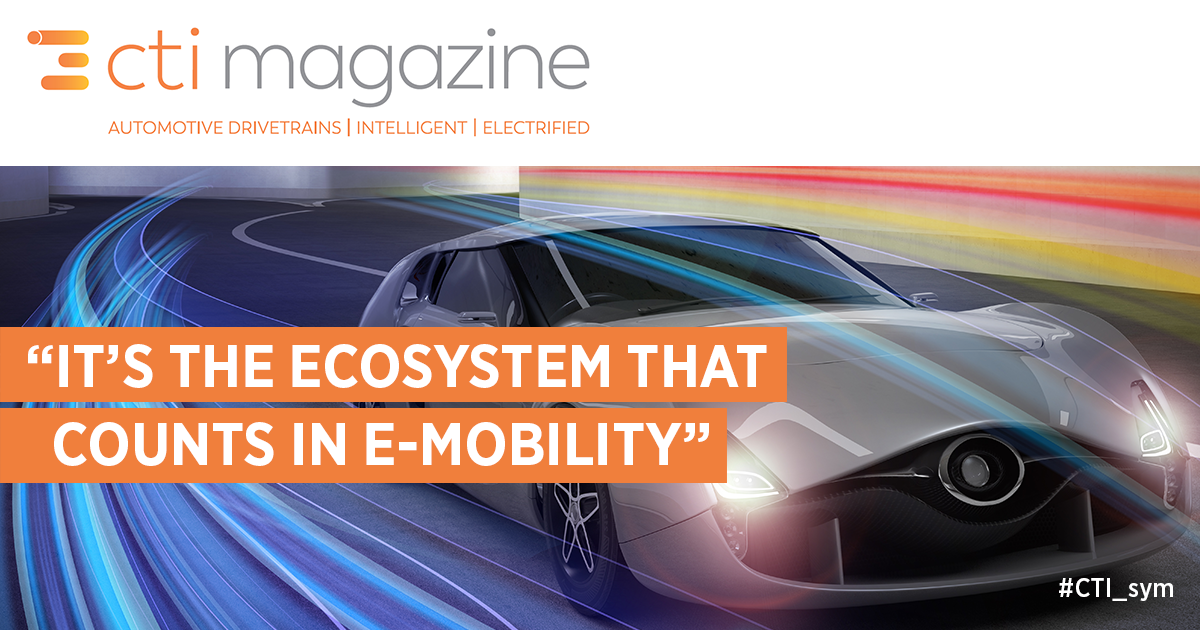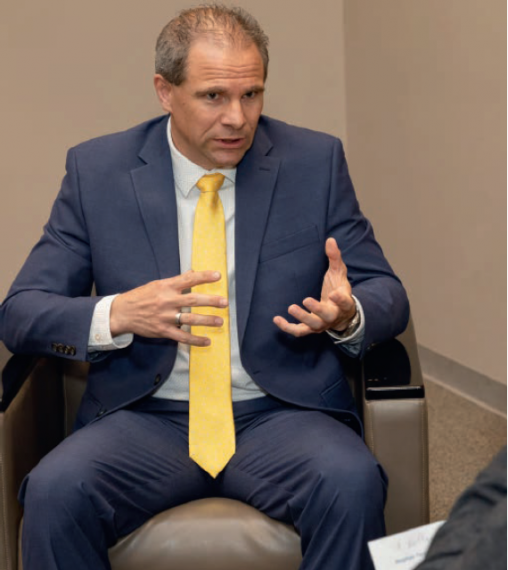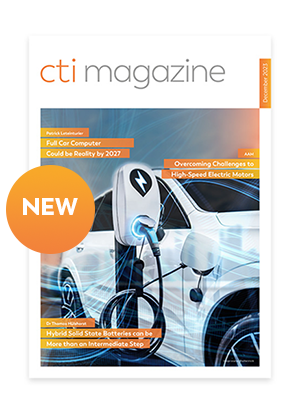

There’s more to e-mobility than just drive electrification alone. It’s an ecosystem where infrastructure, connectivity, HMI, ADAS, security, etc. all interact as a system.
We asked Stephan Tarnutzer, President, AVL Powertrain Engineering Inc., what that means for the work of OEMs, suppliers and engineering service providers.
Mr Tarnutzer, in your plenary lecture ‘The E-mobility Ecosystem as the Differentiator’ at the CTI SYMPOSIUM in Novi, you talked about ‘multilayered challenges’ for the automotive industry. What do you mean by that?
Twenty years ago it was still relatively easy for OEMs to develop, test and build a car, then support it in the market. But when you look at in-car connectivity today, with Apple Carplay, Android Auto and so on, there are so many technologies you can no longer see as individual components. Data is increasingly important: Tesla for example puts out over-air software updates almost every week. They don’t just change the look of your display, they also offer functional improvements based on what Tesla learn from Big Data. It’s a paradigm shift – from a component viewpoint to an ecosystem that extends well beyond the drive.
How does this paradigm shift change the way OEMs, suppliers and engineering service providers work together?
OEMs are creating new areas that they see as Intellectual Property (IP). In the past, that mostly meant combustion engines. Today it includes driver assistance systems, algorithms for software-based functions, and of course the electrified drive systems. But there’s also a tendency among suppliers to increasingly offer systems or subsystems, not individual components. Systems thinking is increasingly shaping cooperation. For development service providers, that’s actually good news because they can be the glue that holds the collaboration together.
“I’d say automotive startups, but also companies like Google or Alibaba that bring a whole new way of thinking and a dynamic approach to the table.”
Stephan Tarnutzer, President, AVL Powertrain Engineering Inc.
Who do you see as new partners in the market, and how will they work together with traditional car manufacturers?
I’d say automotive startups, but also companies like Google or Alibaba that bring a whole new way of thinking and a dynamic approach to the table. People already talk of them in the same breath as traditional suppliers and OEMs. The more the focus shifts from the car itself to an e-mobility ecosystem, the more important these companies will likely become.
What are the chances this might shift the balance of power in the industry?
You already see OEMs, and in some cases major suppliers too, building up an ecosystem of partners. They’re doing it either because they don’t have the in-house capacity, or because they don’t understand the technology, so they call in external specialists. This is a change process that’s currently in full swing. Of course, suppliers and OEMs recognise the risk of their offer becoming just a commodity, and no longer exclusive. That’s something they have to prevent. So the strategy involves growing in-house competence on the one hand, and creating reliable partnerships on the other.
What are the different challenges for e-mobility in international markets?
You can even see differences within the United States. OEMs in California, for example, have a very different take on electric vehicles than OEMs in Detroit. In California they deliver a platform, a system for getting from A to B – a kind of Automotive 2.0, if you like. In Detroit, manufacturers still want to sell customers cars. Overall EVs are less important in the US than in Europe so far, and certainly China where the government is pushing hard. Things are a little more balanced in Europe, where green thinking and an urban mindset are also in the mix. In the US, the government often gives business a free hand. It’s mostly the startups in California that get the ball rolling.
